Sealing & Edge Protection

Sealing & Edge Protection

Sealing profiles form the basis for various applications in the automotive industry, construction materials, mechanical and plant engineering, and air-conditioning or refrigeration technology applications. Moreover, our sealing profiles are made mainly from EPDM, NR and NBR in the most diverse geometries, cross-sections and designs – from simple shapes to complex hollow chambers or hollow bodies.
In addition, the products are mainly water-resistant; some of them are fire-resistant as well.
All in all, ELA offers the following types of products:
Next to the importance of a wide product range, our sealing profiles have proven durability, reliability and cost-effectiveness.
Durability is essential as these products need to withstand the most demanding industrial applications. This is why all our products are suitable for high-pressure applications. Above this, they are available in many standard sizes that fit a wide range of devices.
Reliability is provided by the excellent elasticity that ensures optimal performance over long periods without degradation or loss of adhesion properties.
Neoprene, a synthetic rubber, is the primary material used in sealing profiles and edge protection products. It contains ethylene and propylene, two molecules that make up the basic structure of natural rubber, which allow it to be injection moulded into different shapes and sizes.
EPDM is another common material used in industrial applications. However, it has some advantages over Neoprene, such as being lighter but still having a good resistance against ozone and UV rays. But there are some drawbacks too: EPDM rubbers tend to wear out faster than those made out of natural rubber because they have fewer antioxidants inside them (the ones responsible for protecting against ageing). Therefore more frequent replacements are necessary.
Fire-resistant seals are used in industrial applications and can withstand high temperatures.
The material of fire-resistant seals contains holes throughout its structure (usually made of iron oxide). As soon as they get heated, these pores expand and release gas that creates pressure against the material’s surface, which prevents it from burning further when exposed to flames or other heat sources.
For further products and programs, feel free to visit our catalogue site.